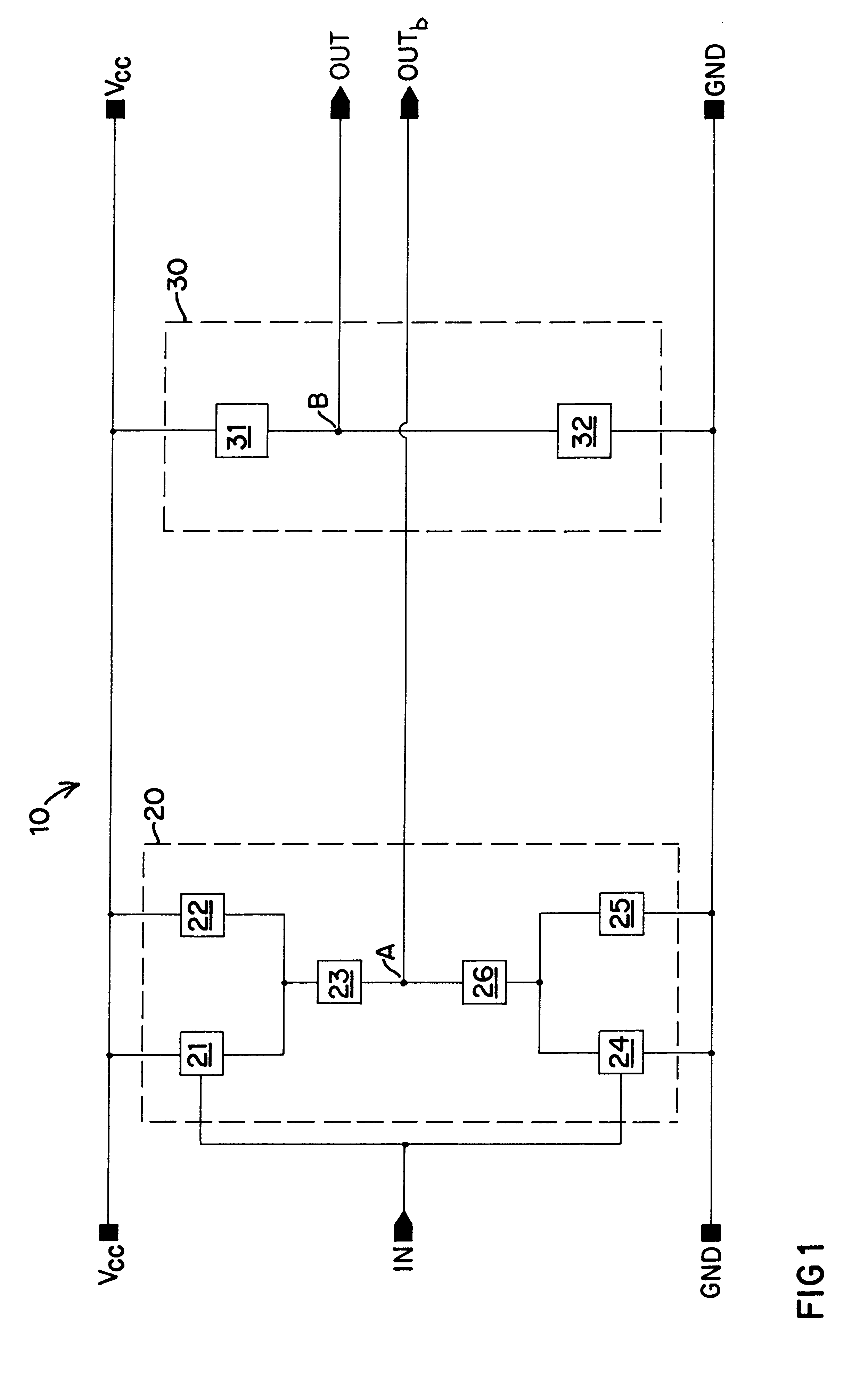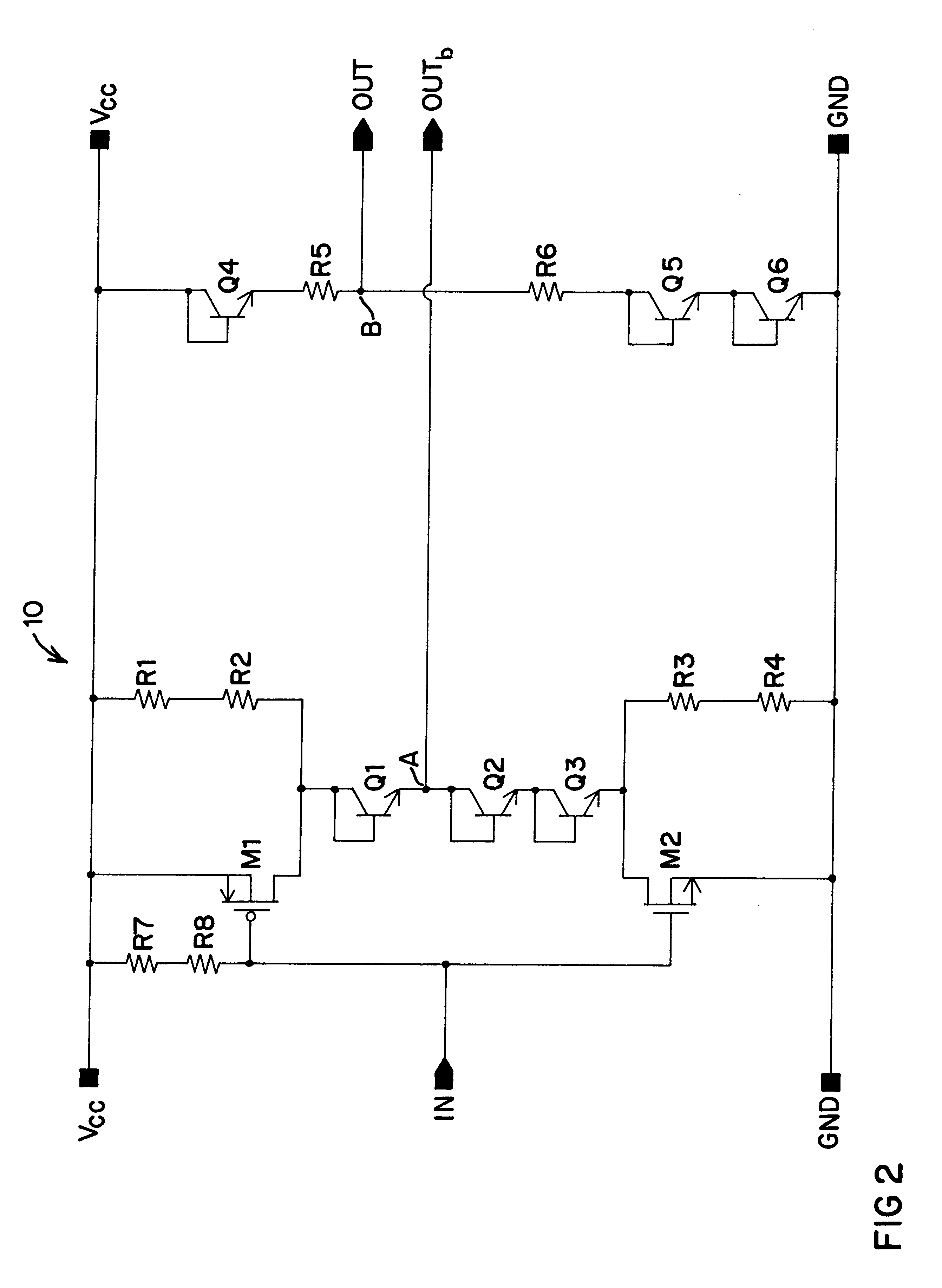High speed low skew CMOS to ECL converter
a converter and low skew technology, applied in the field of circuits, can solve problems such as significant operational errors, and unfavorable unexpected changes in logic values
- Summary
- Abstract
- Description
- Claims
- Application Information
AI Technical Summary
Benefits of technology
Problems solved by technology
Method used
Image
Examples
Embodiment Construction
A high speed, low skew, logic level converter 10 of the present invention is shown in simplified form in FIG. 1. The converter 10 is designed to translate a single switching signal at input node IN from a potential associated with CMOS logic levels into a complementary pair of output signals at OUT and OUTb that are at potentials associated with ECL logic levels. It is contemplated that the potentials associated with OUT and OUTb may be developed by the converter 10 at levels other than those related to ECL including, but not limited to Gunning Transceiver Logic (GTL).
The converter 10 of the present invention includes a first converter branch 20 and a second converter branch 30, wherein output node OUTb is coupled to first converter branch 20 and output node OUT is coupled to second converter branch 30. It is to be noted that input node IN is coupled only to first converter branch 20 and therefore only controls the operation of that branch. On the other hand, second branch 30 is not...
PUM
 Login to View More
Login to View More Abstract
Description
Claims
Application Information
 Login to View More
Login to View More - R&D
- Intellectual Property
- Life Sciences
- Materials
- Tech Scout
- Unparalleled Data Quality
- Higher Quality Content
- 60% Fewer Hallucinations
Browse by: Latest US Patents, China's latest patents, Technical Efficacy Thesaurus, Application Domain, Technology Topic, Popular Technical Reports.
© 2025 PatSnap. All rights reserved.Legal|Privacy policy|Modern Slavery Act Transparency Statement|Sitemap|About US| Contact US: help@patsnap.com



